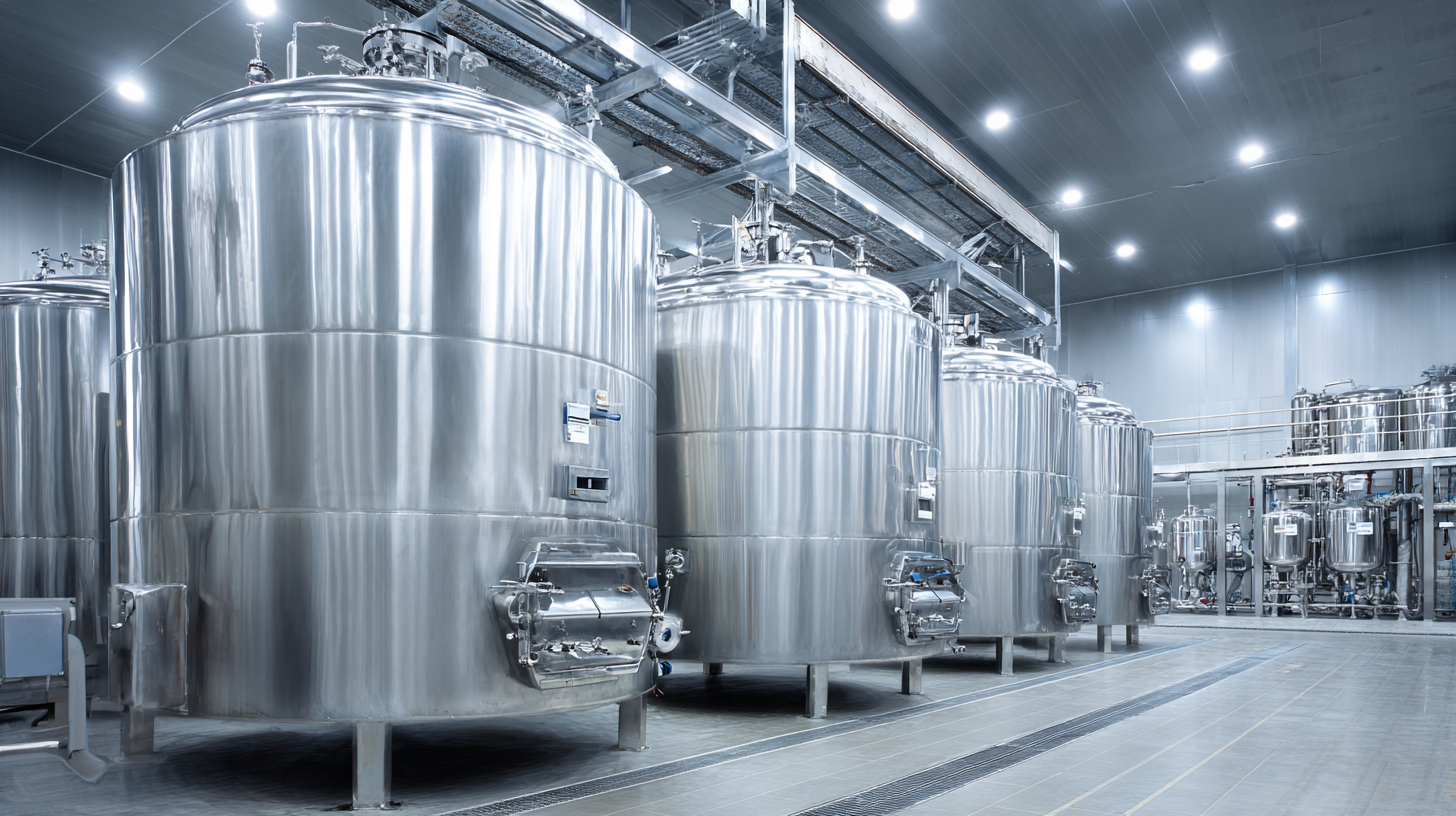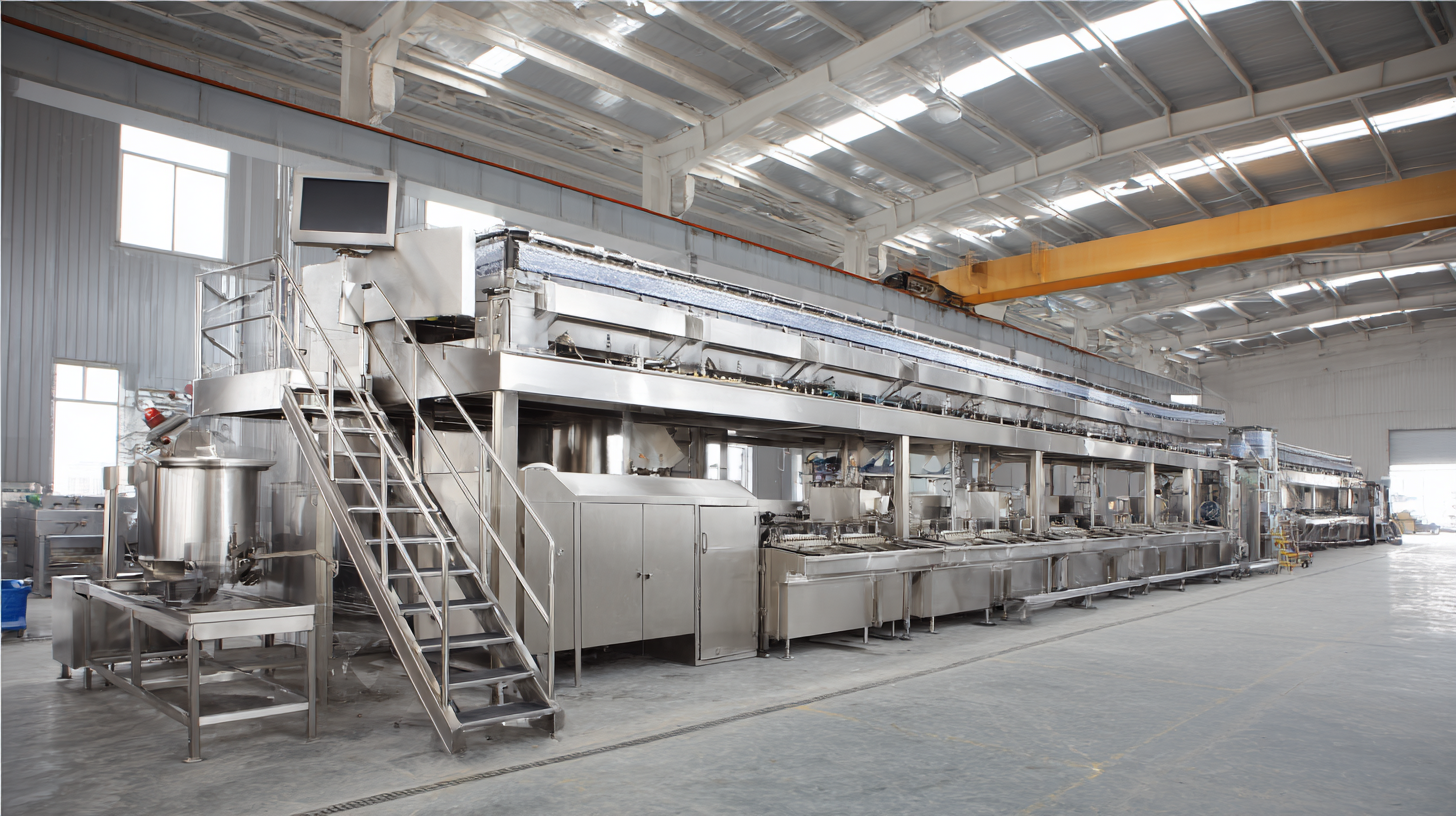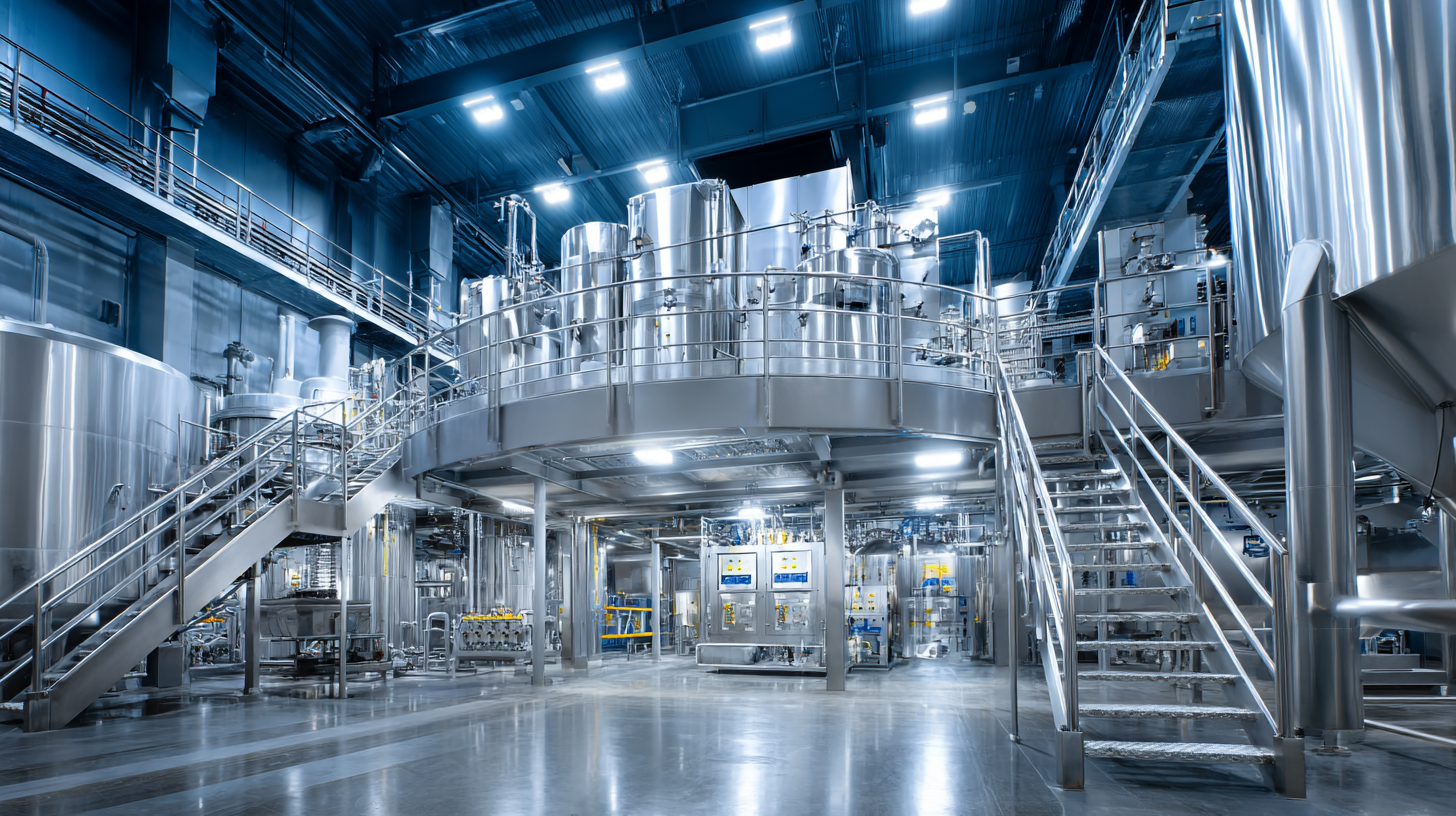7 Essential Tips for Choosing the Right Stainless Steel Machine Product
Table of Contents
- Understanding Different Grades of Stainless Steel for Machine Products
- Key Factors to Consider When Selecting Stainless Steel Components
- Evaluating Corrosion Resistance in Stainless Steel Products
- Importance of Certifications and Standards in Stainless Steel Manufacturing
- Assessing Cost vs. Quality in Stainless Steel Machine Parts
- Tips for Finding Reliable Suppliers for Stainless Steel Products
- FAQS
- Conclusion
- Related Posts
In today’s manufacturing world, picking the right stainless steel machine product is pretty important if you want to keep things running smoothly, last long, and stay budget-friendly. If you’ve been keeping an eye on industry trends, you might have seen that the global stainless steel market is expected to hit over $150 billion by 2025 — that’s a huge number! There’s also a big demand for top-notch machine products that meet strict standards. Companies like Wenzhou Daren Electric Co., Ltd. really shine here; they specialize in making cold-punching automatic molds and tooling fixtures, showing off their skills in product and mold design.

When you're choosing stainless steel machine parts, it’s key to understand things like material specs, how they’re made, and their design features. Doing so helps ensure your final products not only do the job but also boost your overall production quality. In this blog, I’ll share seven handy tips to help you make smarter choices when selecting stainless steel machine products — so you can get your project across the finish line and stay ahead in this competitive industry.
Understanding Different Grades of Stainless Steel for Machine Products
When you're trying to pick the right stainless steel machine products, it really helps to understand the different grades out there. Industry folks often talk about grades like 304 and 316, and honestly, those are some of the most popular because they stand up well against corrosion and last pretty long. So, depending on what you need, choosing the right grade can make a big difference. As the demand for stainless steel keeps climbing, the global market's revenue is expected to jump from around USD 329.9 billion in 2025 up to about USD 308.5 billion by 2033 — which just goes to show how important it is to focus on quality materials. Yeah, the numbers are a little crazy, but they tell a real story about growth and investment.
And, get this — the market for Stainless Steel Seamless Pipes is forecasted to hit roughly USD 5.15 billion by 2030. That’s pretty significant and points to how critical top-grade stainless steel is becoming for all sorts of applications. Plus, with prices bouncing around, keeping an eye on domestic stainless steel mill guidance prices can really help businesses stay ahead of the game and plan better. Overall, if manufacturers stay on top of market trends and understand the differences between various steel grades, they’ll be able to make smarter choices, boost productivity, and ensure their products last longer. It’s all about staying informed and making those strategic moves!

Key Factors to Consider When Selecting Stainless Steel Components
When you're choosing stainless steel parts for your machine products, there are a few important things to keep in mind to make sure they’re durable and perform well. First off, think about which grade of stainless steel suits your needs best. Different grades have their own perks—some are more resistant to corrosion, stronger, or easier to work with. For example, 304 stainless steel is pretty popular because it resists rust pretty well in a bunch of different environments. But if you’re dealing with salty, marine settings, 316 stainless steel might be the better choice since it’s super resistant to saltwater.
Also, don’t forget about how those stainless steel parts are made. The manufacturing process can really make a difference in the quality and precision of the final product. It’s worth checking that they’re made with advanced techniques and proper quality controls, because that means the parts will be more reliable and won’t need as much maintenance down the line. And of course, working with reputable suppliers who follow industry standards is a no-brainer—they’ll be more likely to deliver products that meet your performance and safety needs. Picking the right stainless steel components might take a bit of effort, but it’s absolutely worth it for the longevity and overall success of your machines.
Evaluating Corrosion Resistance in Stainless Steel Products
When you're picking out stainless steel machinery, it's super important to check how well it resists corrosion. Honestly, assessing this aspect can mean the difference between something that lasts and something that just falls apart in tough environments. One handy trick is to look into whether the steel uses certain inhibitors. Recent research suggests that a compound called 1-ethyl-3-methylimidazolium chloride can somewhat slow down corrosion in duplex stainless steel welds—especially when exposed to acids. In fact, under the right conditions, it can zap corrosion by up to 70%. That’s why it really pays to know the environment where the stainless steel will be used and choose products either already treated with good corrosion inhibitors or those that can be easily treated later.
Another thing to keep in mind is the type and grade of stainless steel. For example, austenitic steels like AISI 316L tend to handle corrosive stuff like salt or carbonate salts differently than ferritic options such as AISI 430. So, it’s a good idea to look for products that clearly state their corrosion resistance levels and any special treatments they’ve had to boost performance for your specific needs. Grasping these little details can really help you pick the right product—plus, it means it’ll last longer and keep maintenance costs down in the long run.
7 Essential Tips for Choosing the Right Stainless Steel Machine Product - Evaluating Corrosion Resistance in Stainless Steel Products
| Stainless Steel Grade | Corrosion Resistance | Common Applications | Price Range (per kg) |
|---|---|---|---|
| 304 | Good | Kitchen Equipment, Food Processing | $3 - $5 |
| 316 | Excellent | Marine Applications, Chemical Processing | $4 - $6 |
| 410 | Moderate | Cutlery, Hand Tools | $2 - $4 |
| 430 | Fair | Automotive Components, Dishwashers | $2 - $3 |
Importance of Certifications and Standards in Stainless Steel Manufacturing
When you're choosing stainless steel machinery or products, it's really important to get familiar with the certifications and industry standards that make sure the steel is up to par. I recently read a report from the International Stainless Steel Forum, and it pointed out pretty convincingly that sticking to recognized standards like ISO 9001 and ASTM A240 can make a big difference in how durable and reliable those stainless steel parts turn out. It’s kind of like a guarantee that the products meet strict quality criteria, which is super important especially if you're working in industries like aerospace, automotive, or food processing — you want to be sure everything’s safe and solid.
Plus, there’s this study in the Journal of Materials Engineering that I found quite interesting — it shows that products made under certified processes often have better resistance to corrosion and stronger mechanical properties. For example, stainless steels that follow ANSI/ASTM standards tend to hold up better under stress, which means less chance of failure and improved safety overall. So, if you buy from manufacturers that follow these standards, not only do you get a product you can trust, but it can also save you some serious hassle and money in the long run when it comes to maintenance or replacements.
7 Essential Tips for Choosing the Right Stainless Steel Machine Product
This chart presents the corrosion resistance ratings of different stainless steel grades. Understanding these ratings can guide manufacturers and buyers in choosing the right products according to specific applications and environments.
Assessing Cost vs. Quality in Stainless Steel Machine Parts
When it comes to choosing stainless steel machine parts, you really have to find that sweet spot between cost and quality. I mean, according to a report from the Freedonia Group, the global stainless steel market is expected to hit around $150 billion by 2024. That signals a pretty strong demand, which pretty much fuels both fierce competition and constant innovation in the industry.
Opting for higher-quality stainless steel parts generally pays off in the long run — they tend to last longer and keep your operations running smoother. A study from the International Journal of Advanced Manufacturing Technology even points out that using premium stainless steel components can cut down maintenance costs by up to 30%, compared to lower-grade versions. That’s mainly because they resist corrosion and wear better, so you’re not replacing them as often and facing less downtime.
That said, the upfront cost isn’t exactly cheap — high-grade stainless steel can be 20-30% more expensive than the standard stuff. So, it’s really important for companies to do a proper cost-benefit analysis. Make sure that the benefits of better performance and reliability actually justify the extra spend. If you focus on the long-term gains instead of just saving a few bucks upfront, you’re more likely to make smarter choices that match your operational goals and keep things running smoothly down the line.

Tips for Finding Reliable Suppliers for Stainless Steel Products
When you're on the hunt for stainless steel machine products, what's really key is finding a supplier you can trust. I mean, it’s pretty much all about quality and lasting durability, right? So, a good place to start is by checking out what others have said. Look for reviews or testimonials from folks who’ve already worked with the supplier—that stuff really gives you an idea of whether they’re reliable and if their products are up to snuff. Oh, and if you get the chance, visiting trade shows or industry fairs can be a game-changer. Meeting suppliers face-to-face lets you ask all those burning questions directly and see how knowledgeable they really are.
Another thing to keep in mind is whether they have the right certifications and are following industry standards. It’s important—they show the supplier’s commitment to safety and quality, so you can be more confident their stainless steel products will meet your specs. And don’t forget, having a solid line of communication with potential suppliers is crucial. Chatting about your specific needs and getting a feel for what they can do often leads to a way better partnership. In the end, that kind of chat can really help you find the perfect stainless steel products for your project or business.
FAQS
: The most commonly used grades are 304 and 316, known for their corrosion resistance and durability, making them suitable for various manufacturing processes.
Different grades have unique properties and applications, which can significantly influence the performance and longevity of machine products.
The global market revenue for stainless steel is projected to reach approximately USD 308.49 billion by 2033.
Certifications such as ISO 9001 and ASTM A240 ensure adherence to quality standards, improving the integrity and durability of stainless steel components.
Certified products tend to have enhanced corrosion resistance and mechanical properties, leading to a lower incidence of failure and improved safety in high-stress environments.
High-quality stainless steel components can reduce maintenance costs by up to 30% over time compared to lower-grade alternatives due to their resistance to corrosion and wear.
High-grade stainless steel often costs 20-30% more than standard options, requiring companies to conduct a cost-benefit analysis to justify the initial investment against long-term savings.
The increasing global demand projected to reach $150 billion by 2024 drives competition and innovation, impacting prices in the stainless steel market.
Understanding market conditions and the properties of different grades helps manufacturers make informed purchasing decisions that enhance productivity and product longevity.
Investing in high-quality materials often translates to greater operational efficiency and reduced downtime due to fewer replacements needed over time.
Conclusion
When you're choosing a stainless steel machine product, it's really important to get a grasp on the different grades of stainless steel. Each one has its own set of properties that make it more suitable for specific jobs. Think about things like strength, how well it resists rust, and whether it’s suited for the environment it'll be used in—that can make all the difference. Also, don’t forget to check out the certifications and standards behind the manufacturing process. That way, you can trust that what you're getting is reliable and up to quality standards.
Now, another thing to keep in mind is the old debate of cost versus quality. Usually, paying a bit more for good quality stainless steel parts pays off in the long run—less hassle, fewer replacements. And of course, finding a trustworthy supplier really matters. You want someone who can provide top-notch materials and support from start to finish. Here at Wenzhou Daren Electric Co., Ltd., we’ve got a solid handle on making cold punch automatic moulds and tooling fixtures. We’d be happy to be your partner and help you get the best stainless steel machine parts that fit your specific needs.
Related Posts
-

Choosing the Right Manufacturer for Best Stainless Steel Banding Buckles with Effective Solutions
-

How China’s Stainless Steel PVC Coated Bands Thrive Amidst US China Tariff Challenges
-

Challenges with Ineffective Cable Ties in the Stainless Steel Fastening Market
-

5 Tips to Choose the Best Stainless Steel Cable Ties for Your Project
-

Unlocking the Secrets to Choosing the Best L Type Buckle for Your Business Needs
-

China Manufacturing Excellence Unleashing Quality and Quantity for Global Success
Blog Tags:






